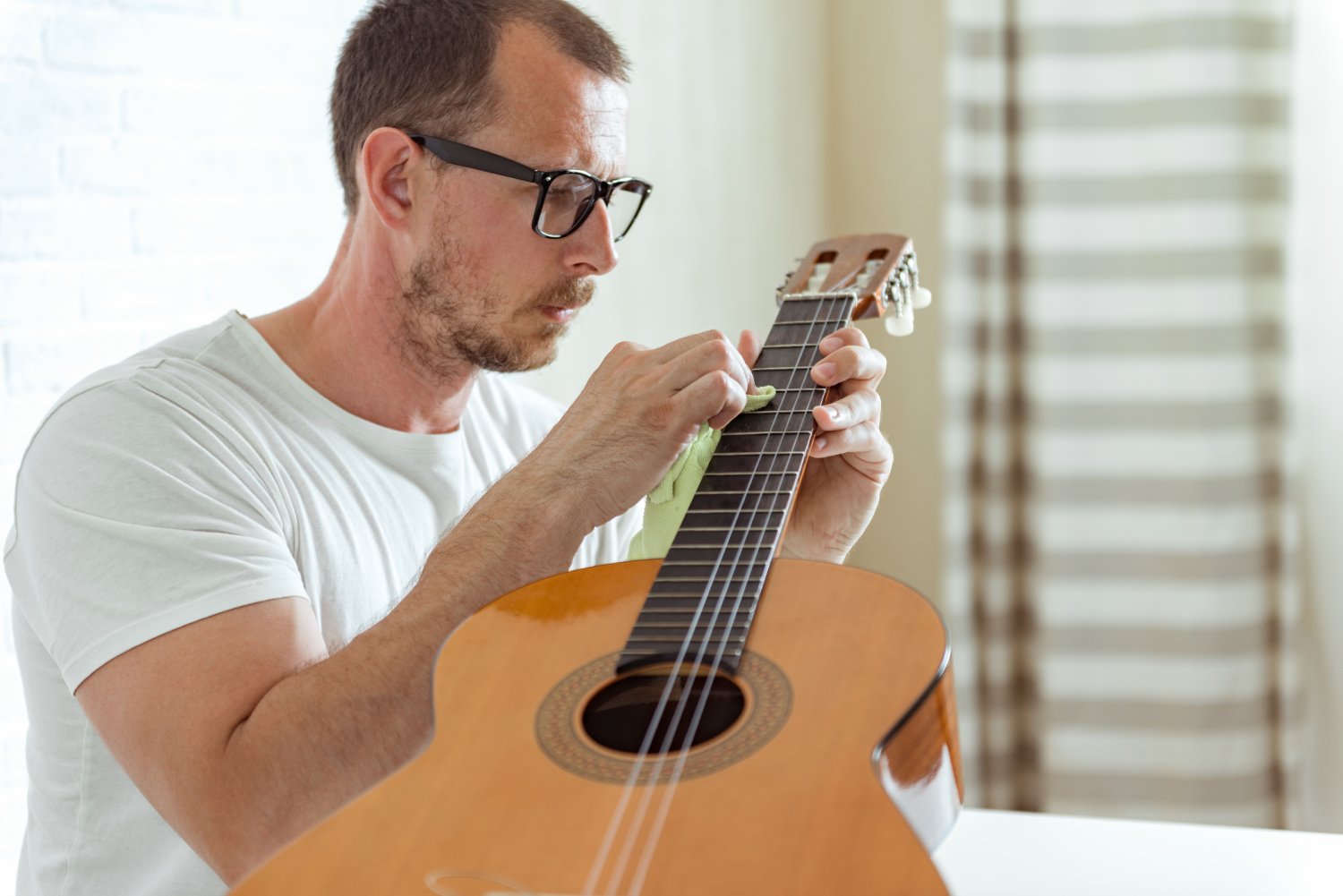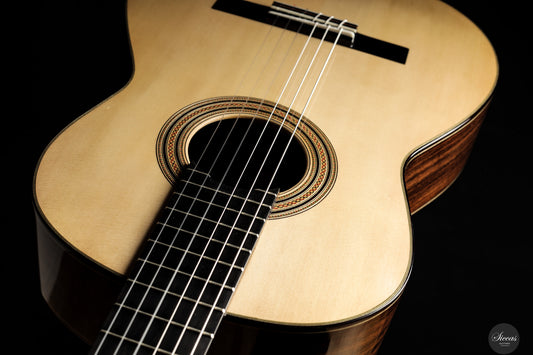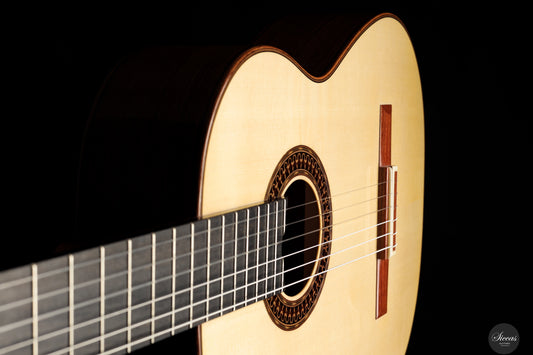Sold
Johannes T'Kindt - 2025
Johannes T'Kindt - 2025
Details
Details
Luthier:
Johannes T'Kindt
Overview
Overview

























Video overview
Some text about the video block with SEO. Some text about the video block with SEO.


More details about the guitar
About the luthier
At the age of 16, Johannes T’Kindt began his training at the International School of Lutherie in Antwerp (ILSA). After graduating three years later, he specialized in the restoration of musical instruments while simultaneously developing his own independent work. During this time, he experimented with different techniques and approaches, building guitars from his student apartment in Belgium. In 2016, he apprenticed under Master Luthier Stephen Hill in La Herradura, Granada. Inspired by this experience, he returned a year later to further refine his skills under Hill’s guidance. It was in this period that the vision of establishing his own workshop in Spain emerged. In October 2017, shortly after obtaining his diploma, he relocated to Andalucía and finally settled in Nigüelas, where his fully equipped workshop officially opened in June 2019. Deeply rooted in the legacy of Antonio de Torres, Johannes T’Kindt embraces the traditions of Spanish lutherie while introducing his own refinements. His guitars are entirely handcrafted, each reflecting a unique balance of tonal quality, playability, and visual identity.About the guitar
This 2025 instrument is the first guitar we present from Johannes T’Kindt with a cedar soundboard. Listeners familiar with his previous spruce-topped models will immediately notice the contrast, as the cedar imparts a warmer and darker response while retaining the clarity and projection for which his guitars are already admired. We recommend comparing this instrument with earlier recordings of his spruce guitars to appreciate the difference. The construction is based on a second-period Antonio de Torres plantilla, featuring a traditional seven-fan bracing pattern with two closing bars and a light bridge bar. This structure supports a resonant, responsive soundboard that blends power, clarity, and nuance. With an air resonance of F/F# and a remarkably low weight of only 1290 grams, the guitar reacts quickly and offers excellent dynamic range. The back and sides are made of Indian rosewood, providing depth and sustain, while the cedar neck and ebony fingerboard ensure both stability and comfortable playability. The instrument is fitted with high-quality Kris Barnett tuning machines, which offer both precision and long-term reliability. A defining visual detail of this guitar is the purfling and rosette, created using T’Kindt’s distinctive “random sequence” herringbone technique. Unlike standard herringbone, which relies on repeating veneer strips, this method uses solid wood pieces placed in a non-repeating order. First discovered in an early spontaneous experiment, the approach was later refined into a deliberate design language that distinguishes his guitars both aesthetically and artistically. The result is an instrument that combines traditional Spanish construction with an unmistakably personal signature.
Otto Rauch is a German guitar maker from the small town of Obermoschel in Rheinland-Pfalz. With over 35 years of experience as a guitar maker, he is one of the German pioneers of double-top construction. After repairing a Matthias Dammann guitar in the early 1990s, Otto Rauch began building doubel-top guitars. At first, he used cedar struts and then a balsa core, a construction he continued to develop over the years. While helping a friend set up his violin making business, Otto Rauch came across the name of the 18th century Venetian violin maker Domenico Montagnana. His cellos are praised for their dark tone, fantastic sound volume and enigmatic construction. As these three attributes reflect Otto’s construction, he adopted the name, and the Domenico Montagnana model was born.









































































